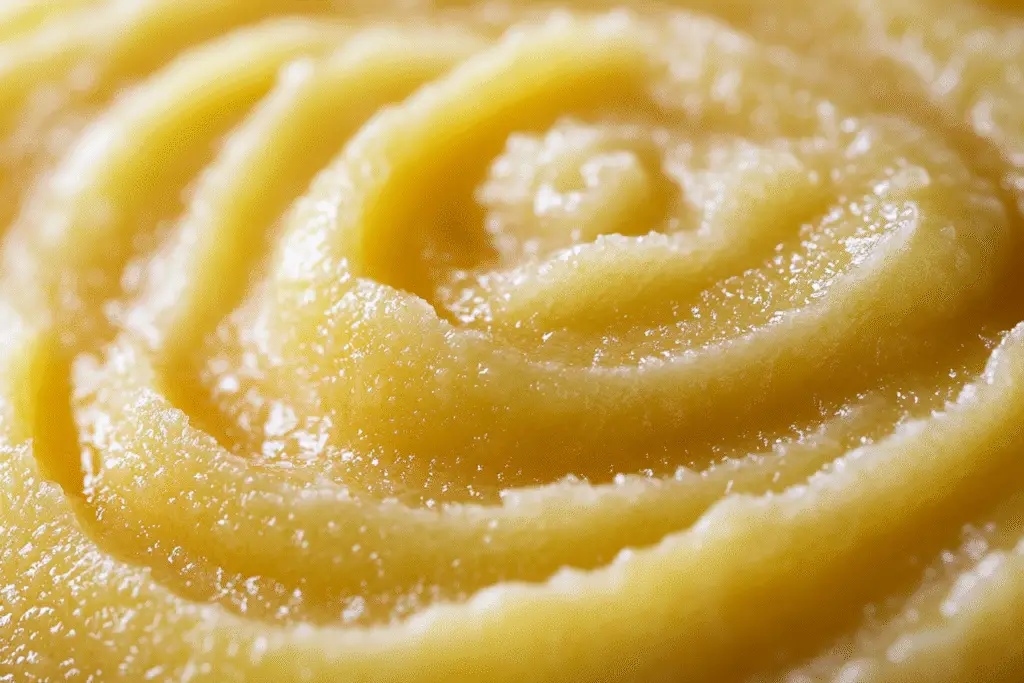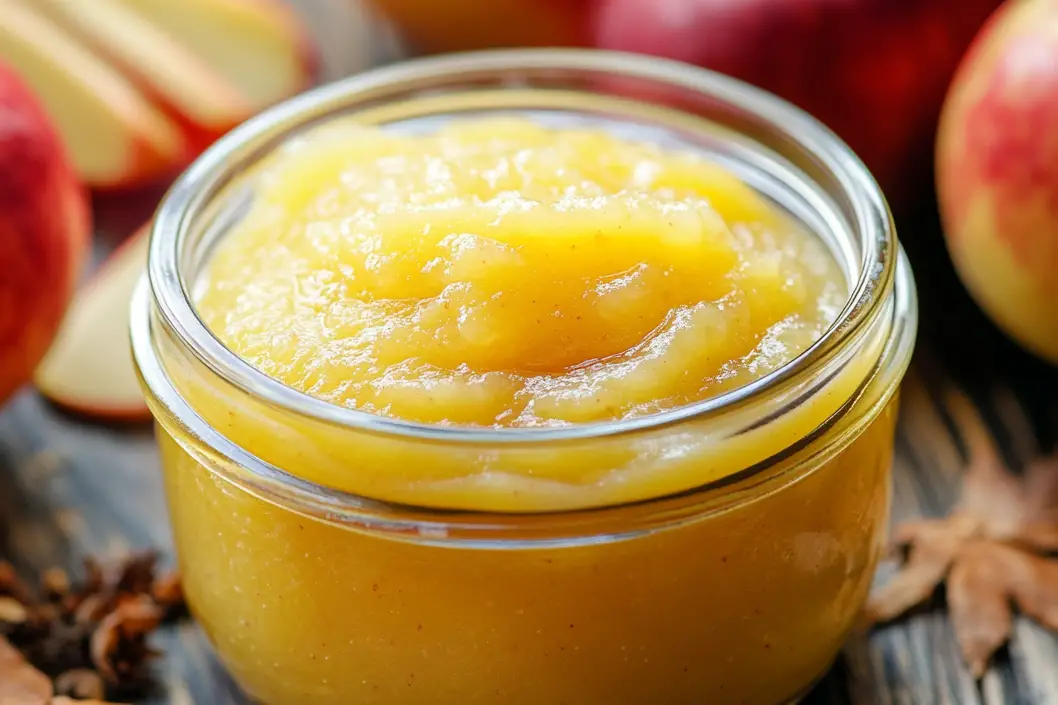The Unmatched Comfort of Homemade Apple Sauce
Apple sauce is one of the simplest yet most comforting recipes you can make from scratch. Sweet, softly tart, and endlessly versatile, a perfectly cooked apple sauce can be a silky side dish, a cozy dessert topping, or even a natural sweetener in baking. Unlike store-bought versions that can taste overly sweet or bland, homemade apple sauce boasts pure, vibrant apple flavor with just the right amount of natural sweetness and spice.
What sets this apple sauce apart as the best is its balance of texture, flavor, and versatility. Whether you enjoy it chunky or ultra-smooth, warm or chilled, this apple sauce delivers a delicate sweetness complemented by subtle cinnamon and a hint of lemon to brighten the flavor. The beauty of homemade apple sauce is that it allows you to control the sweetness and spice, tailor the texture, and use fresh, quality apples—something no jar can replicate.
Apple sauce is incredibly easy to make, yet it has a deeply satisfying, nostalgic quality that appeals to all ages. Once you make it yourself, you’ll never want to go back to the store-bought version.

Choosing the Best Apples for Apple Sauce
The apples you select will significantly influence the sauce’s flavor and texture.
Best Apples for Apple Sauce:
- McIntosh: Soft, tart, and breaks down quickly, perfect for a smooth sauce.
- Braeburn: Well-balanced sweetness and tang.
- Granny Smith: For a tart apple sauce with a fresh, bright flavor.
- Fuji and Gala: Sweet, adding natural sugar without needing much additional sweetener.
Apple Blends:
Using a combination of tart and sweet apples provides the best flavor complexity.
Recommended Equipment for Silky Apple Sauce
- Heavy-Bottomed Saucepan: Prevents scorching and promotes even cooking.
- Peeler and Corer: For quickly prepping apples.
- Potato Masher: For a chunky texture.
- Blender or Immersion Blender: For smooth, silky apple sauce.
- Fine Mesh Sieve (Optional): For ultra-smooth apple sauce.

Common Mistakes and How to Avoid Them
1. Using Only One Type of Apple
Mixing apple varieties ensures a balance of tartness and sweetness and gives the sauce a more rounded flavor.
2. Over-Sweetening
Many apples have enough natural sweetness, especially when using varieties like Fuji or Gala. Start with minimal sugar and add to taste.
3. Burning the Sauce
Cook over low to medium heat and stir regularly to prevent sticking.
4. Not Adding Enough Liquid
A small amount of water, cider, or lemon juice helps soften the apples evenly and prevents scorching.
Ingredient Swaps and Dietary Adjustments
- Sweetener Alternatives: Use honey, maple syrup, or agave instead of sugar for a more natural sweetness.
- Spices: Add nutmeg, ginger, or allspice for variation.
- Vegan: Naturally vegan as written.
- No-Sugar Option: Use sweeter apples like Fuji or Gala and skip additional sugar altogether.
Prep-Ahead and Time-Saving Tips
- Pre-Peel and Core Apples: Store in a bowl of water with lemon juice to prevent browning if prepping ahead.
- Batch Cooking: Double the recipe and freeze portions for future use.
- Quick Cook: Smaller apple chunks cook faster and evenly.
Flavor Boosters and Pairing Ideas
- Cinnamon Stick: Infuses a subtle, warming spice.
- Lemon Juice: Balances sweetness and preserves a bright color.
- Vanilla Extract: Adds a gentle, dessert-like note.
Pair With:
- Roast pork or chicken.
- Potato pancakes or latkes.
- Oatmeal or yogurt.
- Ice cream or pancakes as a topping.
The Best Apple Sauce Recipe
Ingredients
- 6 large apples (mix of tart and sweet), peeled, cored, and chopped
- 1/2 cup water or apple cider
- 2 tablespoons granulated sugar (optional, adjust to taste)
- 1 cinnamon stick (or 1/2 teaspoon ground cinnamon)
- Pinch of salt
- 1 tablespoon lemon juice
- Optional: 1/2 teaspoon vanilla extract
Instructions
Step 1: Prepare the Apples
- Peel, core, and chop the apples into uniform chunks (about 1-inch pieces) for even cooking.
Step 2: Cook the Apples
- In a large, heavy-bottomed saucepan, combine the apples, water or cider, sugar (if using), cinnamon stick, and salt.
- Bring to a simmer over medium heat.
- Cover and cook for 15–20 minutes, stirring occasionally, until the apples are very soft and beginning to break down.
Step 3: Mash or Blend
- For a chunky sauce, mash the apples with a potato masher until desired consistency is reached.
- For a smooth sauce, remove the cinnamon stick and blend using an immersion blender or transfer to a standard blender and puree until silky.
Step 4: Finish the Sauce
- Stir in lemon juice and vanilla extract (if using).
- Taste and adjust sweetness if needed.
Step 5: Serve
- Serve warm, at room temperature, or chilled.
Storage and Reheating
- Refrigerator: Store in an airtight container for up to 1 week.
- Freezer: Freeze for up to 3 months in portioned containers. Thaw in the refrigerator overnight.
- Reheating: Warm gently on the stovetop or in the microwave, adding a splash of water if needed to loosen.
Troubleshooting Tips
- Apple Sauce Too Thin? Simmer uncovered for a few minutes to reduce and thicken.
- Too Thick? Stir in a little extra water or cider until desired consistency is reached.
- Too Sweet? Add a splash more lemon juice or blend in some unsweetened cooked apples.
Variations: Traditional vs. Flavored Apple Sauces
- Traditional: Apples, minimal sugar, and cinnamon for classic comfort.
- Spiced: Add nutmeg, cloves, or ginger for a warming twist.
- Savory: Reduce sugar, add a pinch of salt and pepper for pairing with roasted meats.
- Vanilla-Infused: A splash of vanilla transforms apple sauce into a more dessert-like condiment.
Homemade apple sauce is highly adaptable, and small changes can suit it to breakfast, savory mains, or sweet desserts.
Serving Suggestions
- With Pork: Classic pairing with roast pork or pork chops.
- With Chicken: Light, fruity contrast to roasted or grilled chicken.
- On Pancakes or Waffles: As a natural sweet topping.
- In Baking: Use as a natural sweetener or fat substitute in muffins and cakes.
- As a Snack: Simply served on its own or with a sprinkle of cinnamon.
Pair apple sauce with hot tea, spiced cider, or cold milk for a comforting, satisfying combination. Homemade apple sauce is a simple pleasure that brings warmth and versatility to your kitchen.
